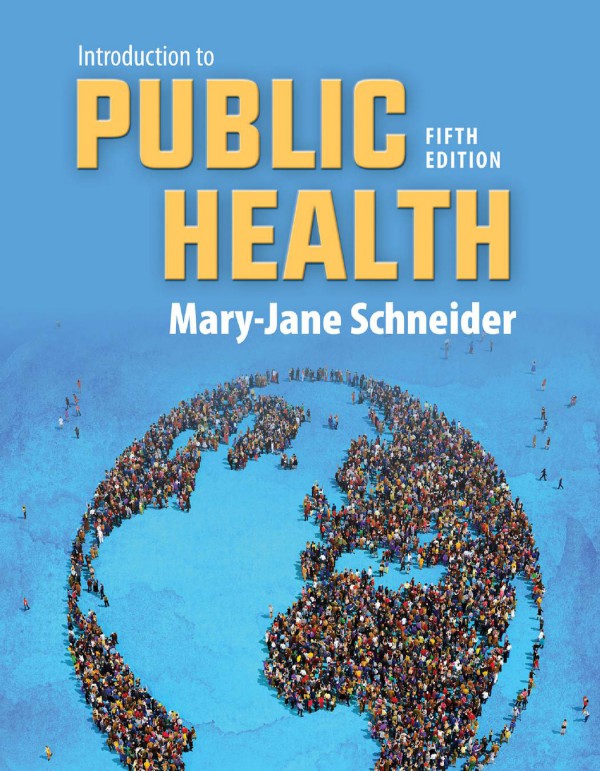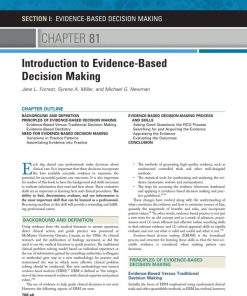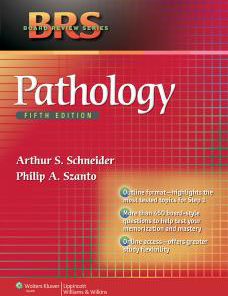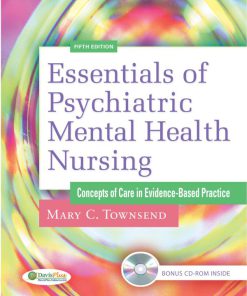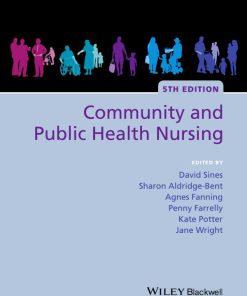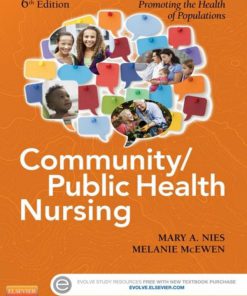Introduction to Public Health 5th Edition by Mary Jane Schneider 1284089231 9781284089233
$50.00 Original price was: $50.00.$25.00Current price is: $25.00.
Authors:Mary-Jane Schneider , Series:Community Medicine [12] , Tags:Medical; Public Health , Author sort:Schneider, Mary-Jane , Ids:9781284197594 , Languages:Languages:eng , Published:Published:Mar 2020 , Publisher:Jones & Bartlett Learning , Comments:Comments:Introduction to Public Health Sixth Edition offers a thorough, accessible overview of the expanding field of public health for students new to its concepts and actors. Written in engaging, nontechnical language, this text explains in clear terms the multi-disciplinary strategies and methods used for measuring, assessing, and promoting public health.
Introduction to Public Health 5th Edition by Mary Jane Schneider – Ebook PDF Instant Download/Delivery. 1284089231 9781284089233
Full download Introduction to Public Health 5th Edition after payment
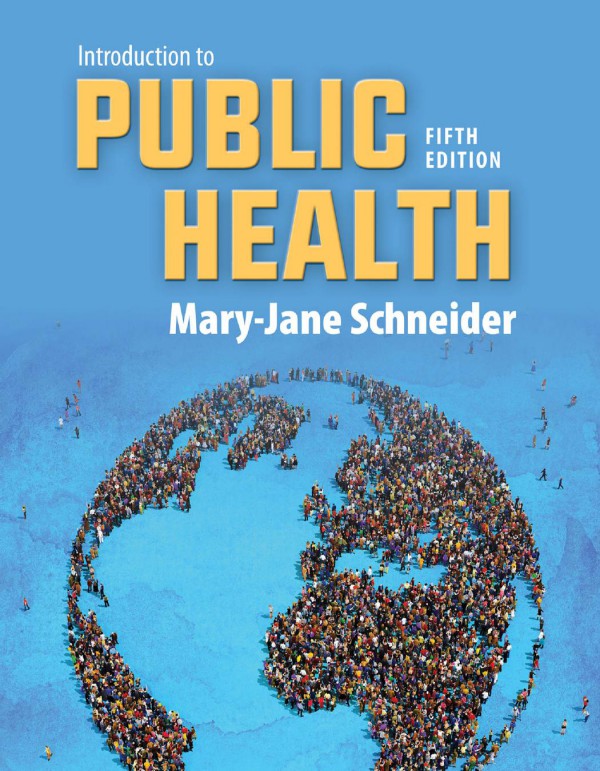
Product details:
ISBN 10: 1284089231
ISBN 13: 9781284089233
Author: Mary-Jane Schneider
A thorough, accessible overview of the expanding field of public health for students new to its concepts and actors. Written in engaging, nontechnical language, this best-selling text explains in clear terms the multi-disciplinary strategies and methods used for measuring, assessing, and promoting public health.
Introduction to Public Health 5th Table of contents:
Part I: What Is Public Health?
1 Public Health: Science, Politics, and Prevention
What Is Public Health?
Public Health Versus Medical Care
The Sciences of Public Health
Prevention and Intervention
Public Health and Terrorism
Conclusion
References
2 Why Is Public Health Controversial?
Economic Impact
Individual Liberty
Moral and Religious Opposition
Political Interference with Science
Conclusion
References
3 Powers and Responsibilities of Government
Federal Versus State Authority
How the Law Works
How Public Health Is Organized and Paid for in the United States
Nongovernmental Role in Public Health
Conclusion
References
Part II: Analytical Methods of Public Health
4 Epidemiology: The Basic Science of Public Health
How Epidemiology Works
A Typical Epidemiologic Investigation—Outbreak of Hepatitis
Legionnaires’ Disease
Eosinophilia-Myalgia Syndrome
Epidemiology and the Causes of Chronic Disease
Heart Disease
Lung Cancer
Conclusion
References
5 Epidemiologic Principles and Methods
Kinds of Epidemiologic Studies
Conclusion
References
6 Problems and Limits of Epidemiology
Problems with Studying Humans
Sources of Error
Proving Cause and Effect
Epidemiologic Studies of Hormone Replacement Therapy—Confusing Results
Ethics in Epidemiology
Conflicts of Interest in Drug Trials
Conclusion
References
7 Statistics: Making Sense of Uncertainty
The Uncertainty of Science
Probability
The Statistics of Screening Tests
Rates and Other Calculated Statistics
Risk Assessment and Risk Perception
Cost–Benefit Analysis and Other Evaluation Methods
Conclusion
References
8 The Role of Data in Public Health
Vital Statistics
The Census
NCHS Surveys and Other Sources of Health Data
Is So Much Data Really Necessary?
Accuracy and Availability of Data
Confidentiality of Data
Conclusion
References
Part III: Biomedical Basis of Public Health
9 The “Conquest” of Infectious Diseases
Infectious Agents
Means of Transmission
Chain of Infection
Rabies
Smallpox, Measles, and Polio
Fear of Vaccines
Conclusion
References
10 The Resurgence of Infectious Diseases
The Biomedical Basis of AIDS
Ebola
Other Emerging Viruses
Influenza
New Bacterial Threats
Multidrug-Resistant Tuberculosis (MDR TB)
Prions
Public Health Response to Emerging Infections
Public Health and the Threat of Bioterrorism
Conclusion
References
11 The Biomedical Basis of Chronic Diseases
Cardiovascular Disease
Cancer
Diabetes
Other Chronic Diseases
Conclusion
References
12 Genetic Diseases and Other Inborn Errors
Environmental Teratogens
Genetic Diseases
Genetic and Newborn Screening Programs
Genomic Medicine
Ethical Issues and Genetic Diseases
Conclusion
References
Part IV: Social and Behavioral Factors in Health
13 Do People Choose Their Own Health?
Education
Regulation
Does Prohibition Work?
Conclusion
References
14 How Psychosocial Factors Affect Health Behavior
Health of Minority Populations
Stress and Social Support
Psychological Models of Health Behavior
Ecological Model of Health Behavior
Health Promotion Programs
Changing the Environment
Conclusion
References
15 Public Health Enemy Number One: Tobacco
Biomedical Basis of Smoking’s Harmful Effects
Historical Trends in Smoking and Health
Regulatory Restrictions on Smoking—New Focus on Environmental Tobacco Smoke
Advertising—Emphasis on Youth
Taxes as a Public Health Measure
California’s Tobacco Control Program
The Master Settlement Agreement (MSA)
FDA Regulation
Electronic Cigarettes
Conclusion
References
16 Public Health Enemy Number Two and Growing: Poor Diet and Physical Inactivity
Epidemiology of Obesity
Diet and Nutrition
Promoting Healthy Eating
Physical Activity and Health
How Much Exercise Is Enough, and How Much Do People Get?
Promoting Physical Activity
Confronting the Obesity Epidemic
Conclusion
References
17 Injuries Are Not Accidents
Epidemiology of Injuries
Analyzing Injuries
Motor Vehicle Injuries
Pedestrians, Motorcyclists, and Bicyclists
Poisoning
Firearms Injuries
Occupational Injuries
Injury from Domestic Violence
Nonfatal Traumatic Brain Injuries
Tertiary Prevention
Conclusion
References
18 Maternal and Child Health as a Social Problem
Maternal and Infant Mortality
Infant Mortality—Health Problem or Social Problem?
Preventing Infant Mortality
Family Planning and Prevention of Adolescent Pregnancy
Nutrition of Women and Children
Children’s Health and Safety
Conclusion
References
19 Mental Health: Public Health Includes Healthy Minds
Major Categories of Mental Disorders
Anxiety
Psychosis
Disturbances of Mood
Disturbances of Cognition
Epidemiology
Causes and Prevention
Children
Eating Disorders
Mental Health in Adulthood
Mental Health in Older Adults
Treatment
Conclusion
References
Part V: Environmental Issues in Public Health
20 A Clean Environment: The Basis of Public Health
Role of Government in Environmental Health
Identification of Hazards
Pesticides and Industrial Chemicals
Occupational Exposures—Workers as Guinea Pigs
New Source of Pollution—Factory Farms
Setting Standards—How Safe Is Safe?
Risk–Benefit Analysis
Conclusion
References
21 Clean Air: Is It Safe to Breathe?
Criteria Air Pollutants
Strategies for Meeting Standards
Indoor Air Quality
Global Effects of Air Pollution
Conclusion
References
22 Clean Water: A Limited Resource
Clean Water Act
Safe Drinking Water
Dilemmas in Compliance
Is the Water Supply Running Out?
Conclusion
References
23 Solid and Hazardous Wastes: What to Do with the Garbage?
Sanitary Landfills
Alternatives to Landfills
Hazardous Wastes
Coal Ash
Conclusion
References
24 Safe Food and Drugs: An Ongoing Regulatory Battle
Causes of Foodborne Illness
Government Action to Prevent Foodborne Disease
Additives and Contaminants
Drugs and Cosmetics
Food and Drug Labeling and Advertising
Politics of the FDA
Conclusion
References
25 Population: The Ultimate Environmental Health Issue
Public Health and Population Growth
Global Impact of Population Growth—Depletion of Resources
Global Impact of Population Growth—Climate Change
Dire Predictions and Fragile Hope
Conclusion
References
Part VI: Medical Care and Public Health
26 Is the Medical Care System a Public Health Issue?
When Medical Care Is a Public Health Responsibility
The Conflict Between Public Health and the Medical Profession
Licensing and Regulation
Ethical and Legal Issues in Medical Care
Ethical Issues in Medical Resource Allocation
Conclusion
References
27 Why the U.S. Medical System Needs Reform
Problems with Access
Why Do Costs Keep Rising?
Approaches to Controlling Medical Costs
Managed Care and Beyond
The Patient Protection and Affordable Care Act
Rationing
Conclusion
References
28 Health Services Research: Finding What Works
Reasons for Practice Variations
The Field of Dreams Effect
Outcomes Research
Quality
Medical Care Report Cards
Inequities in Medical Care
The Relative Importance of Medical Care for Public Health
Conclusion
References
29 Public Health and the Aging Population
The Aging of the Population—Trends
Health Status of the Older Population
General Approaches to Maximizing Health in Old Age
Preventing Disease and Disability in Old Age
Medical Costs of the Elderly
Proposals for Rationing
Conclusion
References
Part VII: The Future of Public Health
30 Emergency Preparedness, Post-9/11
Types of Disasters and Public Health Responses
New York’s Response to the World Trade Center Attacks
Response to Hurricane Katrina
Principles of Emergency Planning and Preparedness
Bioterrorism Preparedness
Pandemic Flu
Conclusion
References
31 Public Health in the Twenty-First Century: Achievements and Challenges
Challenges for the 21st Century
Strategic Planning for Public Health
Dashed Hopes for the Integration of Public Health and Medical Practice
Information Technology
The Challenge of Biotechnology
The Ultimate Challenge to Public Health in the Twenty-First Century
People also search for Introduction to Public Health 5th:
3 functions of public health
introduction to public health 6th edition pdf
5 public health services
introduction to public health 4th edition pdf free
You may also like…
eBook PDF
Introduction to Public Relations 1st Edition by Sue Wolstenholme ISBN 0273750992 9780273750994
eBook PDF
BRS Pathology 5th Edition by Arthur Schneider, Philip Szanto ISBN 1451188897 9781451188899

